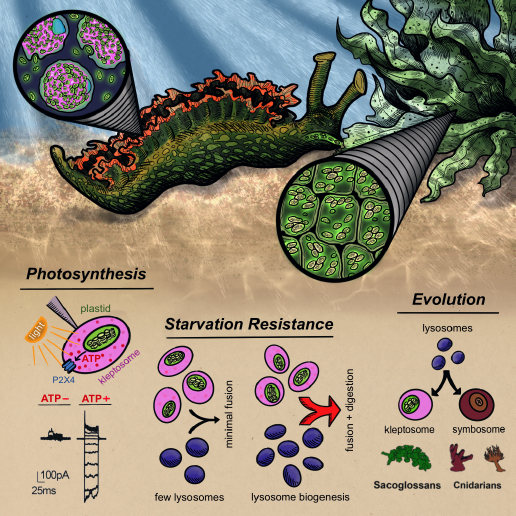
Eukaryotic life evolved over a billion years ago when ancient cells engulfed and integrated prokaryotes to become modern mitochondria and chloroplasts. Sacoglossan ‘solar-powered’ sea slugs possess the remarkable ability to acquire organelles within a single lifetime by selectively "stealing" chloroplasts from algae, which can then remain photosynthetically active for nearly a year. The mechanism for this ‘animal photosynthesis’ was unknown. Here, we discovered that foreign chloroplasts are housed within novel, host-derived organelles we term “kleptosomes.” Kleptosomes use ion channels that sense ATP, a product of photosynthesis, to maintain a luminal environment that supports chloroplast photosynthesis Upon slug starvation, however, kleptosomes digest stored chloroplasts to provide additional nutrients to the slug, thereby serving as a food source. We leveraged this discovery to find that organellar retention and digestion of photosynthetic cargo has convergently evolved in other photosynthetic animals, including corals and anemones. Thus, our study reveals mechanisms underlying the long-term acquisition and evolutionary incorporation of intracellular symbionts into organelles that support complex cellular function.